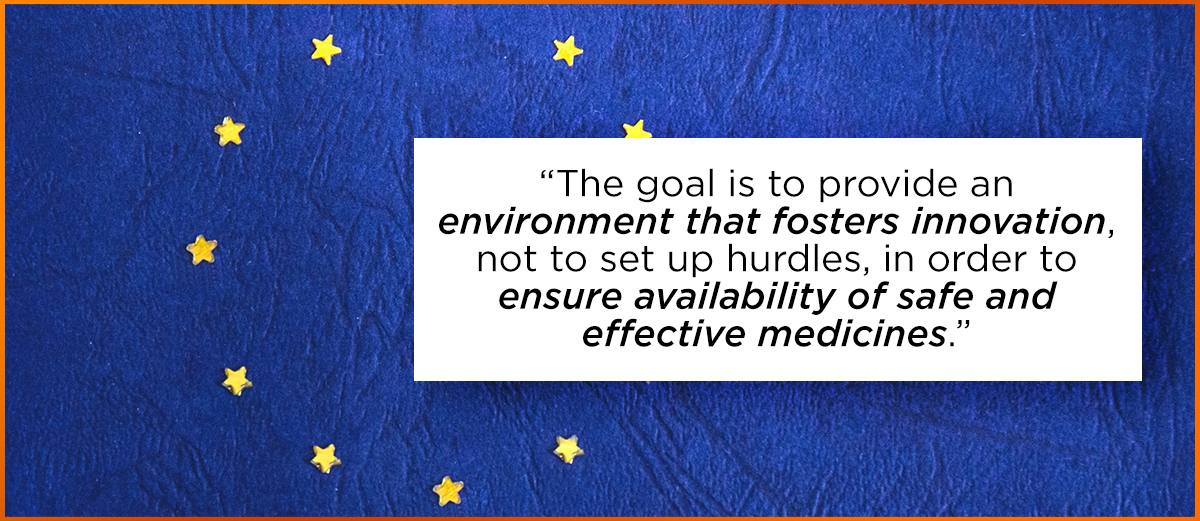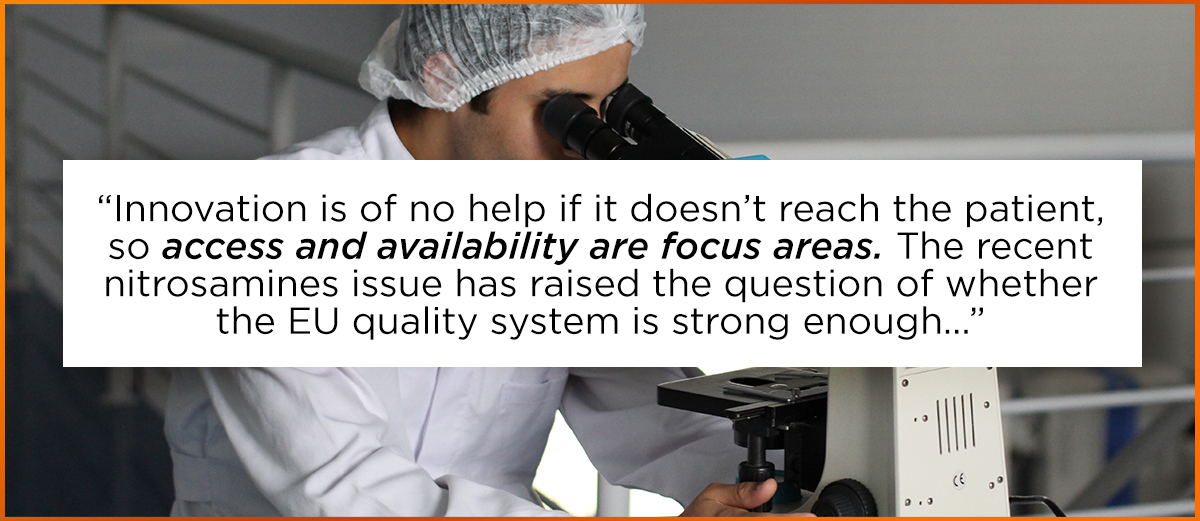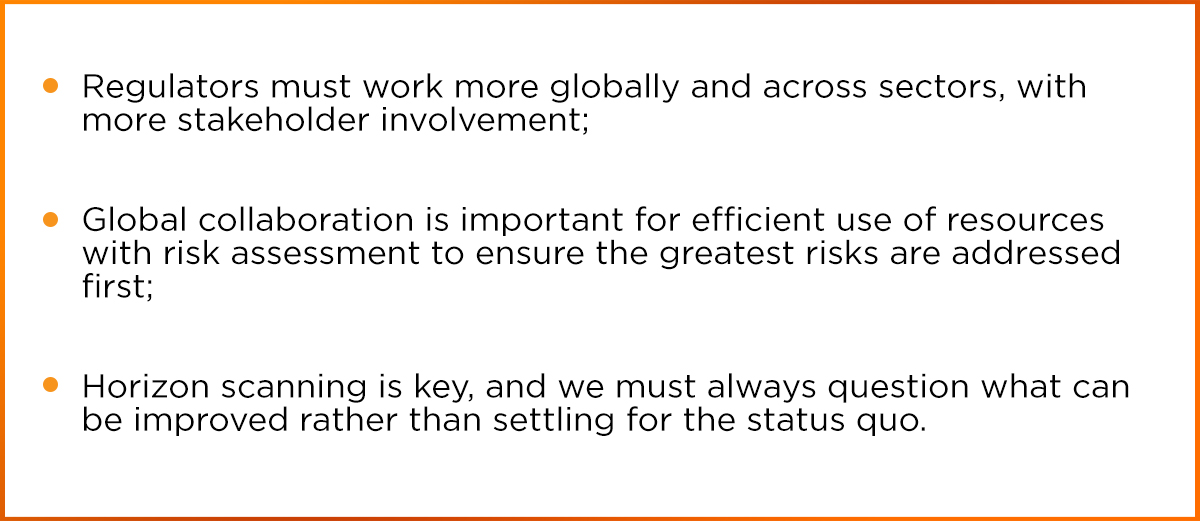Last weeks round-up; 13 -17 April 2020
HPRA NEWS: EXPEDITED REGULATORY AND ETHICS REVIEW IN IRELAND
The HPRA, in conjunction with the Department of Health, the National Office for Research Ethics Committees and the Health Research Declaration Committee (HRCDC), have agreed an expedited review process for human health research related to the current pandemic, further details can be found here https://bit.ly/2Kaun4g. A key development is the establishment of a dedicated COVID-19 national research ethics committee (NREC-COV19) by the Minister for Health. In the interests of time and resource efficiency, applications for ethical review of all human health research studies related to COVID-19 should be submitted to the NREC-COV19. Applications for clinical trials of human medicines, or clinical investigations of medical devices, will be given a priority and expedited review by the HPRA and the NREC-COV19 will review applications concurrently with regulatory review processes and will endeavour to facilitate an expedited ethical review. https://bit.ly/2KbtXuq
EMA INSPECTIONS OFFICE, NOTICE TO SPONSORS ON VALIDATION AND QUALIFICATION OF COMPUTERISED SYSTEMS USED IN CLINICAL TRIALS
Given recent inspection findings and the implications they have had on the integrity, reliability, robustness and acceptability of data in the context of MAAs, the GCP Inspectors Working Group (IWG) in cooperation with the Committee for Medicinal Products for Human Use (CHMP) sees the need to emphasize requirements for sponsors/vendors providing computerised systems or services as well as for the qualification and validation of computerised systems used to manage clinical trial data. The notice stresses “Data integrity, reliability and robustness will depend on the design and the validation status of the computerised systems used. Failure to document and therefore demonstrate the validated state of a computerised system is likely to pose a risk to data integrity, reliability and robustness, which depending on the criticality of the affected data may result in a recommendation from the GCP inspectors to the CHMP not to use the data within the context of an MAA.” The full text is available here https://lnkd.in/e8PfiZ5 and also refers the reader to Q8 and Q9 from the good clinical practice (GCP) Q&As published on the EMA website.
EMA SUBMISSION DEADLINES FOR PAEDIATRIC APPLICATIONS 2020/2021
EMA has just published its submission deadlines for PIP applications for the period 2020/2021. The tabulation can be found here https://lnkd.in/e2hbhUz. Please also note that, per our previous post on 25th March 2020, a letter of intent for PIPs and PIP waivers is no longer required.
EC NEWS: COVID-19: GUIDANCE ON MORE REGULATORY FLEXIBILITY FOR MEDICINES
The European Commission, EMA and the European medicines regulatory network have developed a Q&A document to provide guidance to stakeholders on adaptations to the regulatory framework to address challenges arising from the COVID-19 pandemic. The document published today outlines areas where regulatory flexibility is possible to address some of the constraints marketing authorisation holders may be faced with in the context of COVID-19. The document outlines areas where regulatory flexibility is possible to address some of the constraints marketing authorisation holders may currently be faced with. https://lnkd.in/d5SY6z2
EMA HAS ESTABLISHED A COVID-19 EMA PANDEMIC TASK FORCE (COVID-EFT)
EMA has issued a document outlining the ‘Mandate, objectives and rules of procedure of the COVID-19 EMA pandemic Task Force (COVID-ETF)’. EMA has the mandate under the Health Threat plan to convene specific expert groups such as the EMA Task Force (ETF) to assist the CHMP, PRAC and PDCO or take part on behalf of the CHMP in early scientific discussions and products reviews as needed. This methodology has helped greater coordination in previous outbreaks. In the context of the COVID19 pandemic, and following a call from Member States (MSs) and European Institutions, the composition and the objectives of the ETF have been modified in order to better support the regulatory activities and public health needs of the Member States and the European Commission during this pandemic. Full details can be found https://lnkd.in/dz6BV8J
Last weeks round-up; 30 March – 3 April 2020
EMA ADOPTS ICH GUIDELINE S11 ON NONCLINICAL SAFETY TESTING IN SUPPORT OF DEVELOPMENT OF PAEDIATRIC PHARMACEUTICALS
EMA has adopted the ICH S11 guideline. It is due to come into effect on 26th September 2020. The guideline provides direction on the nonclinical safety studies important to support a paediatric development program. It will recommend standards for the conditions under which nonclinical juvenile animal testing is considered informative and necessary to support paediatric clinical trials, and also provides guidance on the design of the studies. A streamlined drug development and higher scientific rigor while minimizing the unnecessary use of animals will be achieved with the implementation of this new harmonised ICH guideline. The full text can be found here https://lnkd.in/dbkTrr2
EMA BIOLOGICALS WORING PARTY (BWP) HAS PUBLISHED ITS RECOMMENDATIONS FOR THE SEASONAL INFLUENZA VACCINE COMPOSITION FOR 2020/2021 SEASON
The BWP was convened in order to recommend the virus strains for the manufacture of seasonal influenza vaccine for 2020/2021. Having considered the information on international surveillance by WHO presented by the representative of the WHO Collaborating Centre for Reference and Research on Influenza at the Francis Crick Institute (UK), the CHMP BWP Ad hoc Influenza Working Group, consisting of experts on influenza from the Member States, considered that the WHO recommendation on the composition of vaccines for 2020/2021 should be followed. The recommendations can be found under this link https://lnkd.in/dSgTVp4
EMA: FEES INCREASE 1ST APRIL 2020
The EMA has announced that general fees payable to EMA by applicants and marketing-authorisation holders are increasing by 1.6% on 1 April 2020. Full details of the new fee levels are available in Commission Regulation (EU) No 2020/422 amending Council Regulation (EC) No 297/95, its implementing rules and the corresponding explanatory note on fees, published on 19 March 2020. These documents include the new fees for all types of procedures handled by the Agency, except for pharmacovigilance procedures. Every year, the Agency adjusts its fees on 1 April, in line with the European Union (EU) inflation rate for the previous year. The current increase reflects the inflation rate for 2019, as published by Eurostat, the EU’s statistical office. https://lnkd.in/eJFEjHQ
ICH: EC AND EMA IN COLLABORATION WITH EU MEMBER STATE, ADEQUATELY IMPLEMENT AND ADHERE TO ICH GUIDELINES
ICH has issued the results of a survey, which show that the EC and EMA, in collaboration with EU Member States, adequately implement and adhere to ICH guidelines, without introducing unjustified modifications: Adequacy of Implementation and Adherence to International Council for Harmonisation of Technical Requirements for Pharmaceuticals for Human Use (ICH) Guidelines: centralised procedure with EMA. https://lnkd.in/eiAUGbb These results are part of a 2019 study to monitor the adequacy of implementation and adherence to ICH guidelines in regulatory member and observer countries and regions. The study report provides a gap analysis based on authorities’ and companies’ views on the implementation and adherence of regulators to ICH guidelines. It reveals a close alignment between the self-declaration of the authorities and perception among companies. For more information, see ICH guideline implementation on the ICH website. https://lnkd.in/efGNCwZ
EMA: ADVANCING REGULATORY SCIENCE IN THE EU: NEW STRATEGY ADOPTED
EMA has published its Regulatory Science Strategy to 2025 on 31st March 2020. It comes in response to the dramatic acceleration of the pace of innovation and the need to support the development of increasingly complex products, especially in the light of the ongoing COVID-19 pandemic. One of the fundamental principles of the strategy is the need for rapid and close engagement of all stakeholders and partners. The learnings from the handling of this public health crisis will be incorporated in ongoing adaptations in real-time. The five key goals of the strategy include: catalysing the integration of science and technology in medicines development; driving collaborative evidence generation – improving the scientific quality of evaluations; advancing patient-centred access to medicines in partnership with healthcare systems; addressing emerging health threats and availability/therapeutic challenges; enabling and leveraging research and innovation in regulatory science. https://lnkd.in/gXXxV2r
HPRA – APPLICATION BY A MANUFACTURER FOR A REGULATORY DEROGATION FOR A NON-CE MARKED MEDICAL DEVICE FOR COVID-19
HPRA issued form ‘Application by a Manufacturer for a Regulatory Derogation for a non-CE marked Medical Device for COVID-19’ on the 24th March 2020 for manufacturer’s to apply to HPRA for permission for use of their non-CE marked medical device(s) by healthcare professionals in the context of COVID-19 outbreak. The form is intended to speed up the process of use of devices for COVID-19 and must be completed by the manufacturer or their authorized representative. The form is available from the following link https://lnkd.in/eYAjh-C
EMA TO ISSUE ELECTRONIC CERTIFICATES FOR MEDICINES
From 30th March 2020 EMA has implemented a new system to issue electronic certificates for human and veterinary medicines. EMA will no longer provide printed certificates. This will allow the agency to maintain the ability to provide these documents during the COVID-19 pandemic. The new format of the certificates is based on an electronically signed PDF document and will apply to all ongoing and future requests. The Agency will also consider whether the electronic signature should be implemented as a permanent solution as part of its efforts to digitalise its administrative processes for all documents requiring signature. Questions on the new electronic certificates can be sent by email to: certificate@ema.europa.eu. More information on the certification of medicinal products is available on EMA’s website.
Last weeks round-up; 10 – 14 February 2020
HPRA IN IRELAND HAS ANNOUNCED THE PHASED ENDING OF THE USE AND LEARN PERIOD FOR THE IMPLEMENTATION OF THE SAFETY FEATURES REQUIREMENTS FROM THE FALSIFIED MEDICINES LEGISLATION (FMD)
The Safety Features Oversight Group in Ireland (which comprises the Irish Medicines Verification Organisation (IMVO), Department of Health, Health Products Regulatory Authority (HPRA), Pharmaceutical Society of Ireland (PSI), Health Service Executive (HSE) and Private Hospitals Association (PHA), has agreed that the use and learn period for the Safety Features requirements will end in a phased approach.
The 3 detailed phases commencing 2nd March 2020, are;
- Parallel imported and parallel distributed from Primary Wholesalers – from 2nd March 2020
- All wholesalers – from May 2020, precise date to be notified
- Pharmacies, hospitals and all others who supply medicines to the public – from Sept 2020, precise date to be notified.
Further details and definitions can be found here (https://lnkd.in/dhkfSUu).
Last weeks round-up; 13 – 17 January 2020
THE ART OF DOING CLINICAL REGULATORY WELL
With over 8000 clinical applications every year, the landscape of clinical regulatory is becoming increasingly challenging to navigate. These additional challenges have pushed Sponsors into trying to achieve the same objective with the same or reduced financial and human resources. For this to be possible, project management and involvement of experienced CRO and regulatory consultants are vital to the smooth and effective running of clinical trial applications, with a focus on forward planning and anticipating issues that may be raised during the assessment process. For more information, please see the following link: https://lnkd.in/dQKjmDW
HPRA UPDATE: GUIDE TO LABELS AND LEAFLETS OF HUMAN MEDICINES
The HPRA have published an update to their Guide to Labels and Leaflets of Human Medicines at the beginning of January 2020. Amendments have been made to the information on leaflets and package labelling which does not require formal assessment and do not need to be notified until the next regulatory opportunity. More specifically, the HPRA does not require a formal notification when administrative information from an EU member state or the UK in the blue box is either added, deleted or changed, as long as no other changes are made, and it does not impact on the livery of font size of the packaging. The bulk of the update relates to multilingual packaging requirements.
The HPRA encourages the use of multilingual packaging, in the case of supply shortages on the Irish market, provided the readability is not compromised, following the principles of the CMDh Best Practice Guide on Multilingual packaging. New considerations are given to packaging which includes third country information (such as UK details), joint names and small immediate packaging unit requirements. For further information, please see the following link: http://bit.ly/2R73KAa
Europe as a Centre for Regulatory Excellence – The journey
Chair: Lorraine Nolan, Chief Executive, HPRA, Ireland
Panelists:
- Anthony Humphreys, Head of Scientific Committees Regulatory Science Strategy, EMA
- Pär Tellner, Director, Regulatory, Drug Development and Manufacturing, EFPIA
- Florian Schmidt, Deputy Head of Unit B5, Directorate General Health and Food Safety (DG SANTE), European Commission
- Greet Musch, General Director DG PRE authorisation, FAMHP, Belgium
Lorraine Nolan welcomed attendees to Dublin and introduced the session, asking attendees to answer a few questions using the Menti.com mobile app, to show the demographics of the attendees (e.g., which area of regulatory affairs they work in and how many years of regulatory experience they have) and what the attendees saw as key developments going forward (real world evidence(RWE) and artificial intelligence (AI) were the top answers).
Pär Tellner gave the industry view regarding whether Europe is a centre for regulatory excellence. On the positive side, the EU review procedure is predictable with clear timelines; the EU Centralised Procedure (CP) system of having both a rapporteur and a co-rapporteur ensures continuity; the EU system is an example and inspiration for other regions, e.g., Eurasian Economic Union; and the EMA’s coordination role for joint HTA/regulator scientific advice (SA), Priority Medicines (PRIME) scheme and Regulatory Science Strategy to 2025 are great examples of regulatory excellence. However, there are also areas with potential for improvement: EU approval times are generally longer than for US and Japan; the perception amongst EFPIA companies is that the US FDA is more open to accepting data from complex clinical trials (CTs) and RWE (although no evidence that this is in fact true); there is insufficient consistency at all levels of the network, e.g., paediatrics; EMA SA timelines are too long at 4-6 months; and processes for drug-device combinations and biomarker validation need to be optimized. The risk is that new active substance submissions will be submitted first in US, Japan and China, with European submission only later in a second wave.

Representing the EMA, Anthony Humphries asked how can the EMA be future-proofed, and what should the agency be doing in the next 5 years? The EMA holds technology platform meetings with companies to find out what new technologies they are developing. EMA is trying to: foster innovation in CTs, e.g., methodological complexity, multiplicity and digital therapeutics; promote use of high quality real world data (RWD) with involvement of patients across the product life-cycle; encourage health technology assessment (HTA) preparedness for faster patient access; keep abreast of medical innovations in diagnosis, e.g., genomics and AI. The goal is to provide an environment that fosters innovation, not to set up hurdles, in order to ensure availability of safe and effective medicines.
Greet Musch provided a national competent authority (NCA) view, discussing the Heads of Medicines Agencies (HMA)-EMA regulatory framework common strategy, which focuses on four areas. First, innovation, which requires the medicines agencies to reach out to the medical technology sectors to develop a more holistic view of the different regulatory initiatives, e.g., interplays of CT Regulation with IVD Regulation; seek out critical expertise and focus on innovative CT designs. Second, availability/accessibility of medicines, which requires reaching out to HTA bodies, payers, health care providers and patient both from an early stage and during the product life-cycle; and enhancing international alignment. Third, use of data analytics and AI in decision making, with use of RWD/RWE and digitalization of CT and manufacturing processes. Fourth, sustainability and operational excellence of the regulatory network, with a leaner iterative process to enhance return on investment with innovation committees linking together existing groups, e.g., SAWP-CTFG-EUNetHTA, CTFG-PDCO; and development of NCAs as centres of excellence.

Florian Schmidt presented the European Commission view, admitting that there are challenges for the system now with new political leadership due in November 2019. However, divergences are being addressed with medical devices being considered now also under the same DG with medicines and setting the dual priorities of supply of affordable medicines whilst still supporting innovation to keep the EU at the forefront of development. Innovation is of no help if it doesn’t reach the patient, so access and availability are focus areas. The recent nitrosamines issue has raised the question of whether the EU quality system is strong enough, with more global diversity in supply introducing more risk. With the rise in ATMPs, drug/device combinations, use of AI in CTs and post-market, is the EU regulatory system still fit for purpose? These changes in paradigm must affect the regulatory framework.
During the panel discussion, the following key points emerged for future action to keep Europe a centre of regulatory excellence:





